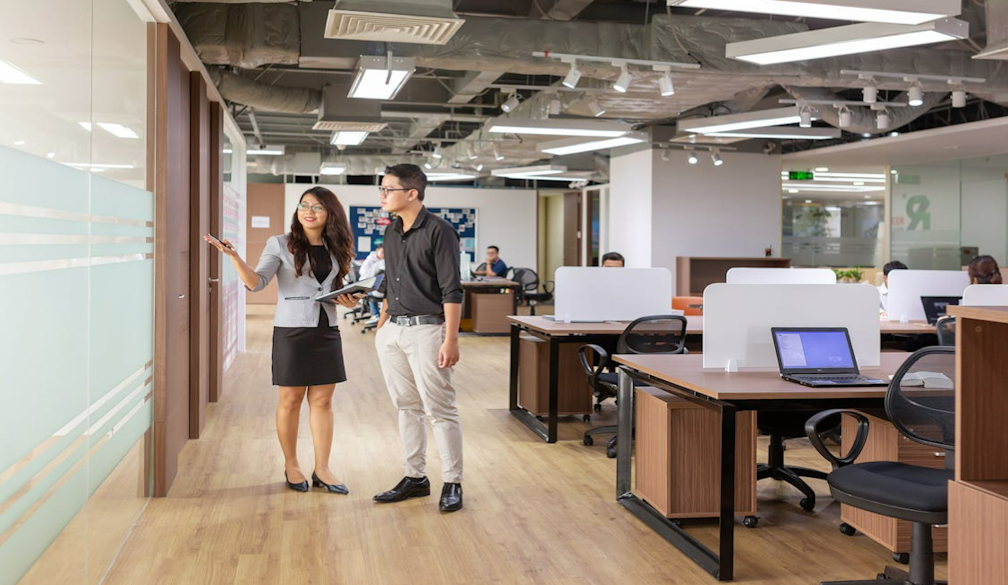How to Balance Collaboration and Privacy in Office Fitouts

Not too long ago, the office was a place where silence ruled. Cubicles stretched out like tiny boxes, each person tucked away in their own little bubble. It might have looked organised, but teamwork didn’t come naturally in that sort of setup. Then came the open-plan craze, and suddenly offices began to resemble bustling cafés, full of chatter, ringing phones, and the odd debate about weekend footy.
The truth is, neither extreme works on its own. The sweet spot lies somewhere in the middle—a balance between collaboration and focus. You see that in modern office fitouts. And before you look around for the best office fitout Sydney companies has to offer, listen up.
The Shift From Cubicles to Open Plans
Cast your mind back to the cubicle era. At first, it seemed like a clever idea—privacy for everyone, walls to block noise, a little personal space. But after a while, it felt more like working in a maze, cut off from colleagues unless you popped your head over the divider. Then open-plan offices arrived with a bang.
Suddenly, the walls came down, and communication flowed more freely. Sounds ideal, right? Not always. Open spaces came with a price: distractions. We’ve all been there, trying to focus while someone nearby is laughing on a call or clattering away on their keyboard. The pendulum swung too far, and workplaces began realising that while collaboration is crucial, so is concentration.
Collaboration Spaces That Actually Work
When you think of collaboration, it’s easy to picture a big table surrounded by chairs. But that’s old hat. These days, collaboration hubs are far more dynamic. Imagine walking into a space with flexible meeting pods that can be moved around as needed. One day, they’re side-by-side for team workshops, and the next, they’re split for smaller project groups.
Breakout lounges play their part too. Soft seating, warm lighting, maybe even a splash of greenery—these relaxed nooks encourage conversations that spark ideas. It’s the kind of space where a quick chat can turn into the seed of a new project.
Then there are writable walls and digital tools. Imagine scribbling down a concept mid-discussion or sharing a sketch instantly with remote teammates. These touches keep brainstorming fluid, natural, and genuinely fun.
Creating Quiet Pockets Without Feeling Boxed In
On the flip side, everyone needs a bit of quiet now and then. Deadlines don’t care if the office is buzzing, and concentration doesn’t always come easy in an open space. The trick is to carve out private areas without slipping back into the cubicle days.
Soundproof booths are one clever answer, giving people somewhere to duck into for calls or deep-focus work. Glass-partitioned corners work just as well, offering privacy without completely shutting people off from the rest of the office. And then there are acoustic panels—simple, effective, and surprisingly stylish.
There’s nothing worse than trying to piece together a complex report with chatter buzzing in your ear. Modern fitouts acknowledge this, blending quiet zones seamlessly into the flow of the office. The result? Employees can step away for focus time but still feel part of the bigger picture. Privacy isn’t isolation anymore but a well-designed part of the whole.
Furniture and Layout Tricks
Furniture is like a tool that shapes how people use a space. Movable screens can turn an open desk area into a semi-private spot in seconds. Modular desks shift easily, joining together for teamwork or splitting apart for solo focus. Then there’s soft seating, which does double duty: comfortable for staff and handy for soaking up some of the background noise.
Tech Tools that Bridge the Gap
Technology is the invisible glue holding collaboration and privacy together. Wireless connectivity means staff can move from a meeting pod to a quiet room without skipping a beat. Room-booking systems keep the peace by letting people reserve focus areas when they need them most.
The best part is when all this tech blends into the background. Nobody wants to wrestle with cables or fumble around looking for a port. A good fitout makes the whole experience seamless, so people barely notice the design. They just know it works.
The Role of Design in Supporting Wellbeing
Balance is about how the space makes people feel. Natural light is a big one, as it keeps energy levels steady and helps people stay alert. Add in touches of greenery, and suddenly the office feels calmer, fresher, more inviting. Ergonomic setups matter too, with chairs and desks designed to support the body rather than strain it.
You know that foggy feeling under harsh fluorescent lights? That’s exactly what thoughtful design is meant to avoid. By blending comfort with functionality, fitouts create spaces where people can switch between collaboration and focus without feeling drained.
Office Fitouts: Making Everything Work for Your Team
Every workplace is unique. The right balance comes from tuning into how your team works—when they need to connect, when they need quiet, and how they switch between the two. A smart office fitout builds in that flexibility, giving employees the confidence that the space will support them, no matter the task at hand.
In the end, a fitout isn’t just about aesthetics. It’s about building an environment that moves with your people, not against them. That’s the real key to balancing collaboration and privacy, and to building a workplace that genuinely works.









